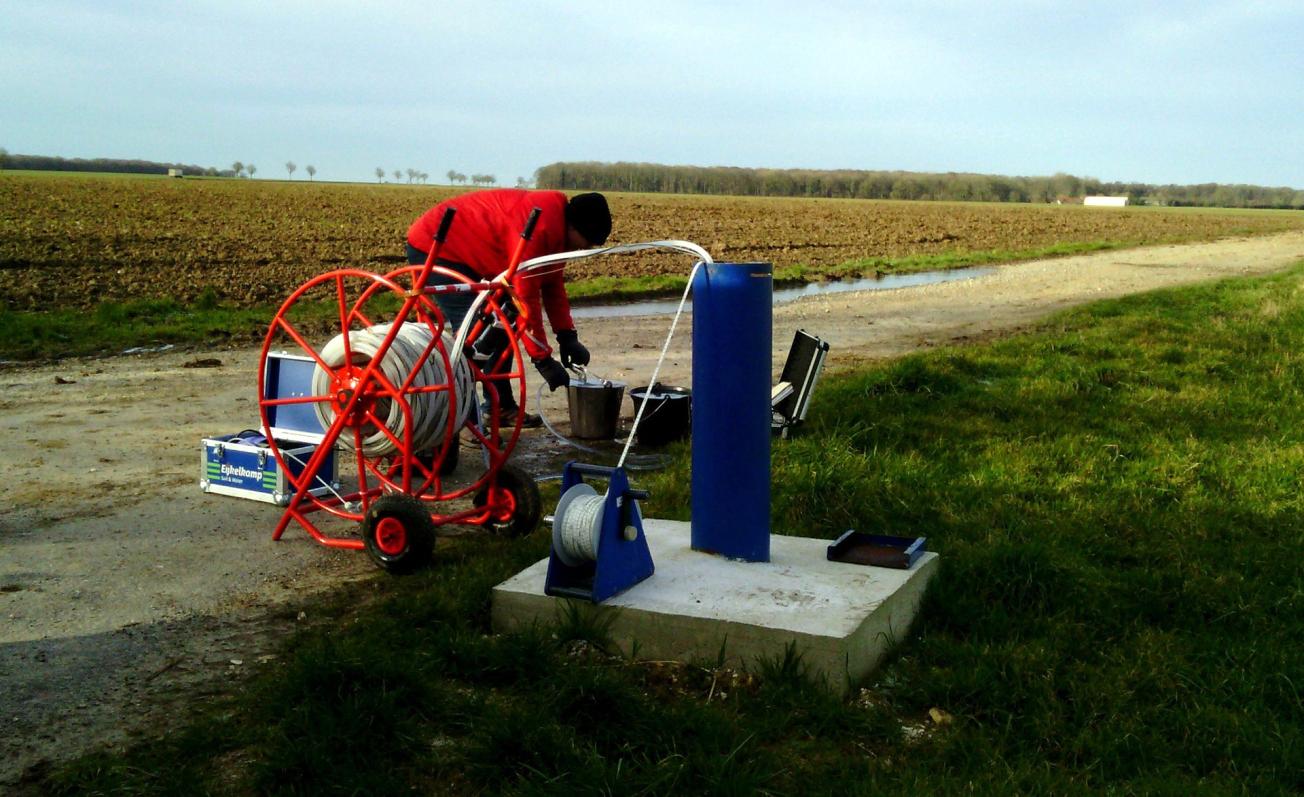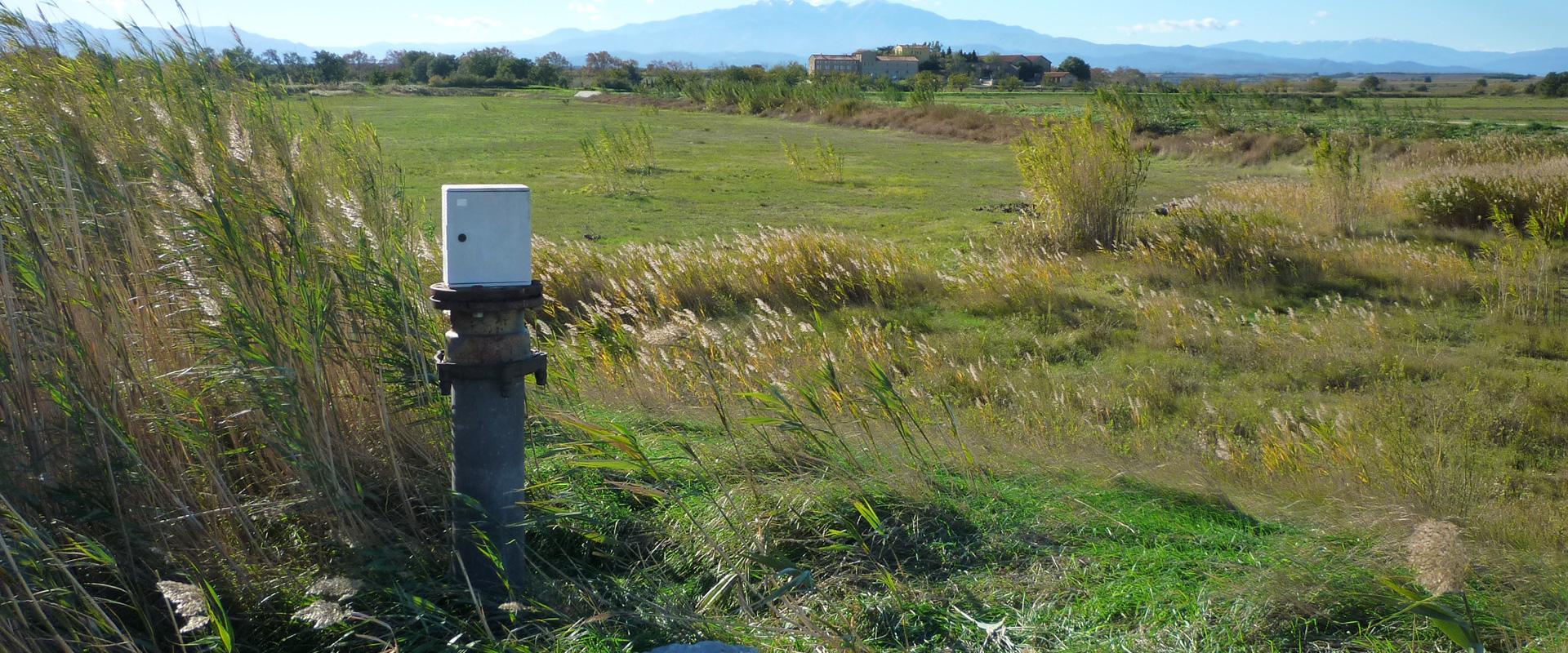
Groundwater sampling in a new structure (BSS003VSUO) installed in the Airon-Saint-Vaast abstraction supply zone (13/02/2018).
© BRGM – Franck Joublin
The need
The Airon-Saint-Vaast catchment area is made up of a dry valley cutting through partially karstified Seno-Turonian chalk. The chalk aquifer supplies drinking water (about 2 Mm3/year) through four boreholes in which nitrate concentrations have been increasing since the 1970s, exceeding the 50 mg/L threshold.
In 1992, the abstraction supply zone was classified as a vulnerable area and measures were undertaken to improve agricultural practices. In 2011, a Multi-Contamination-Source Territorial Diagnosis was carried out and an action programme drawn up. In 2013, water abstraction structures were designated a priority under the Grenelle Environment Forum. Nevertheless, nitrate concentrations in the abstraction structures are now stabilising at still significant levels, between 40 and 60 mg/L.
This is why, in 2015, the drinking water department of the town of Berck-sur-Mer asked BRGM to help it better understand the causes and changes in nitrate concentrations on the scale of the catchment area.
The results
After an inventory of the structures had been made, new piezometer boreholes were drilled in 2017, making it possible in particular to characterise the impact of a former landfill site (the former Becquelin-Coulomb quarry). Nitrogen and boron isotopes indicate that there are different nitrate sources in the upland area (predominantly organic sources) and in the dry valley downstream of the former landfill (mainly typical of mineral fertilisers). Several tracers revealed that some of the contaminants arrive rapidly in the catchment structures. The karstification of the chalk, especially under and around the dry valley, could favour such circulation speeds.
The measuring points on the plateaus show higher nitrate concentrations than in 1984 and 1997. This trend is explained, on the one hand, by the fact that nitrogen is stored in the soil, in organic form, before being nitrified again and, on the other hand, by slow transfers into the unsaturated zone, delaying the release to groundwater. Thus, this inertia of the soil-ZNS-aquifer system defers the benefits of the remediation actions undertaken in the abstraction supply zone.
Using the results
The results of this study have led to a number of recommendations, the main one being to strengthen the investigation and remediation efforts for the former landfill, with a body of evidence indicating a direct impact on the abstraction supply zone.
The partners
- Airon-Saint-Vaast Abstraction Structures Manager: Drinking Water Department of the Town of Berck-sur-Mer until 31 December 2017; CA2BM from 1 January 2018.
- New boreholes drilled by "SARL Boniface" with supervisory support from "Amodiag Environnement".







